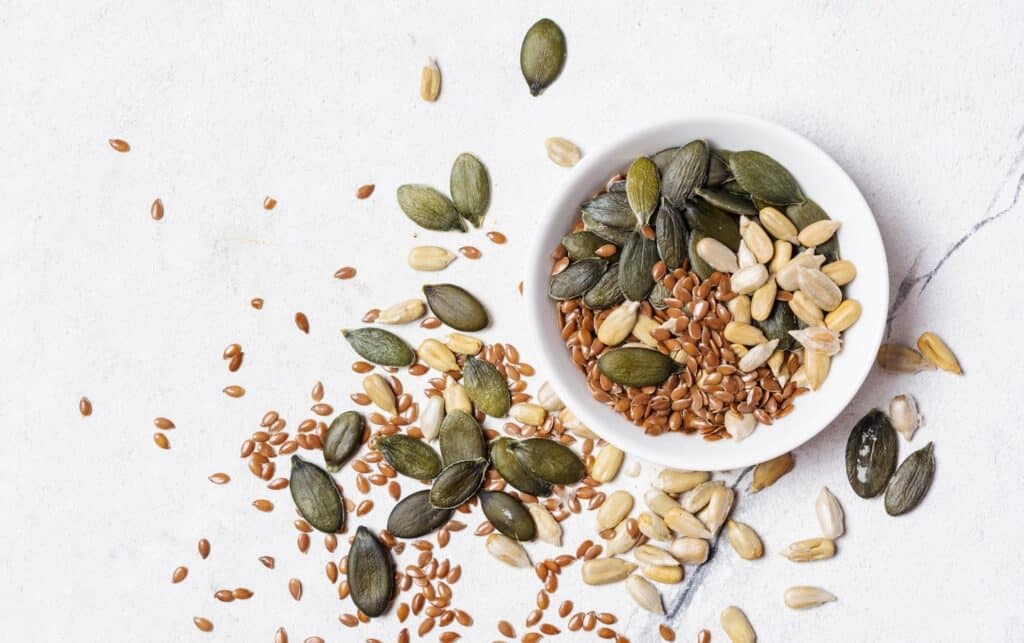
There’s a difference between women and men—and it goes beyond physical distinctions. We’re talking about health disparities and how women respond to remedies. A gender bias can even lead women to seek treatment too late or get a wrong diagnosis.
Many women don’t know what to expect during their life stages or how to handle preventive care. That’s why it’s so important to learn more about women’s unique health concerns. After all, knowledge is power!
What to Know About Women’s Health
What can you do to boost your health or support the health of women in your life? Here are seven facts about women’s health and tips for a healthy lifestyle.
1. Women caregivers have a greater risk of poor health
According to the U.S. Bureau of Labor Statistics (BLS), most caregivers are women. Women caregivers face more long-term mental health issues — such as depression and anxiety — than their male counterparts.
Taking care of someone is often stressful, and stress can lead to poor-quality sleep and poor health. If you’re tossing and turning at night, you won’t feel refreshed in the morning. You might get sick more easily or even forget to exercise.
To reduce your chances of poor health as a caregiver, set aside time for you. Here are some tips:
- Get some exercise into your day
- Choose heart-healthy foods
- Make time for an activity or hobby you enjoy
- Stay connected with family and friends
- Keep up with medical checkups
2. What you eat affects your hormones and menstrual cycle
You are what you eat, right? What you eat affects your health and mood. It can also affect your hormones — and reproductive health.
Vitamin D is important for hormonal health, so think about adding foods like eggs and fatty fish to your diet. Thanks to their omega-3 nutrients, fatty fish like salmon also help balance estrogen and can ease menstrual pain.
For a healthy diet, you should also stock up on cruciferous veggies, too. They have phytoestrogens like lignans and coumestrol, which help balance estrogen during your monthly cycles.
To gain better insight, track what you eat on the MyFitnessPal app. You’ll see your daily intake of iron, calcium, vitamin D, protein, and other essential nutrients. Plus, you can see how much fiber, sugar, fats, and carbs are in the foods you eat.

You might also like
Maybe Don’t Spend Too Much Money on Seed Cycling, Says Experts >
3. The right exercise is important when pregnant
Pregnancy brings life. It also changes life: yours! If you’re pregnant, you want to safely get enough physical activity in your day. Safely staying active during pregnancy can reduce your chances of:
- Gestational diabetes
- Deep vein thrombosis
- Preeclampsia
- Low back pain
We get it—pregnancy can make it harder to work out. To keep your body strong as your baby grows, try modified exercises or alternative forms, like swimming, stationary bikes, or water aerobics. Pilates and yoga stretches can also help you keep moving.
4. Nutritional needs change as you (and your menstrual cycle!) age
As you move through life, your nutritional needs change.
- In your teens to 20s: Consider eating foods rich in protein, calcium, and iron.
- In your 30s: Try adding more calcium, omega-3s, and dietary fiber.
- In your 40s: Keep up with calcium and protein and try adding more dietary fiber and vitamin D.
- In your 50s+: Consider increasing calcium, protein, fiber, and vitamin D and adding more omega-3s and vitamin B12.
According to the USDA Dietary Guidelines for Americans 2020-2025, young women generally don’t get enough protein, calcium, and iron in their diet. Good health also includes vitamins B6 and B12: two vitamins that support your growth and body changes.
Have you transitioned into your adult years? It may be time to increase your calcium, fiber, and vitamin D.
The Dietary Guidelines say that about 90% of adult women don’t get enough dietary fiber during this stage. Also, about 60% don’t get enough calcium, and 90% don’t get enough vitamin D. These nutrients are essential for building bone mass. Use the MyFitnessPal app to monitor how much calcium, protein, and vitamin D you’re getting each day, which can boost bone and hormone health.
What about older women’s nutritional needs? You may need to continue to increase your calcium, vitamin D, and fiber intake. Vitamin B12 and protein are also essential. The Dietary Guidelines say that about 50% of older women don’t get enough protein, which can lead to muscle loss.
5. Menopause can affect your body composition
Menopause is when your ovaries stop releasing eggs. It’s also when estrogen significantly drops for many women. You might think estrogen is only for your reproductive system, but it does a lot more.
Estrogen also affects your:
- Bone density
- Muscle mass
- Cholesterol levels
- Blood sugar levels
- Blood circulation
- Heart health
- Brain health
- Skin health and collagen production
Menopausal symptoms affect your mood, body temperature, and energy. A drop in estrogen can also lead to overall weight gain and more belly fat. A higher body mass index (BMI) and weight gain can cause more health risks such as cardiovascular diseases.
Here are some ways to help prepare your body for menopause:
- Focus on cardio and strength-training exercises
- Eat more whole grains, fruits, and vegetables
- Switch unhealthy dietary fats to healthy fats like olive oil and fatty fish
- Reduce the stresses in your life
- Increase your calcium and vitamin D
- Boost your sleep hygiene

You might also like
This Nutrition Plan Was Made For Women, By a Woman Dietitian >
6. Hormone levels can impact your exercise performance
Hormone shifts during your menstrual cycle can lead to changes in exercise performance. You have two main menstrual phases: follicular and luteal. Follicular is the first half of the month, with day one being the start of menstruation.
During the follicular phase, you might feel more motivated to workout. But take care. Your hormones rise throughout this phase, but they start low. Too many sudden switches to your workout routine could lead to muscle soreness or damage.
In the luteal phase, your estrogen starts to drop, while progesterone continues for a bit. Then, both hormones drop as menstruation approaches. This phase is best for lower-intensity workouts and plenty of recovery time.
7. Women’s risk of osteoporosis is four times higher
A woman’s body uses a lot of estrogen to keep bones strong. After menopause, you can’t rely on that steady supply of estrogen. That decrease has an impact on health. It can make your bones more brittle and lead to a 4x higher risk of osteoporosis.
Since muscle loss also occurs with aging, your muscles won’t stay as strong. Fitting more exercise into your day also helps protect your bones. More muscles as “padding” can reduce the risks of fractures or breaks, even with lower bone density.
The post 7 Things You Probably Don’t Know About Women’s Health appeared first on MyFitnessPal Blog.
0 Comments